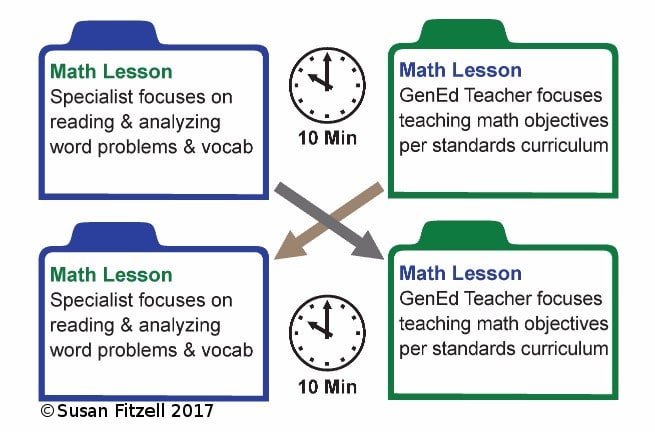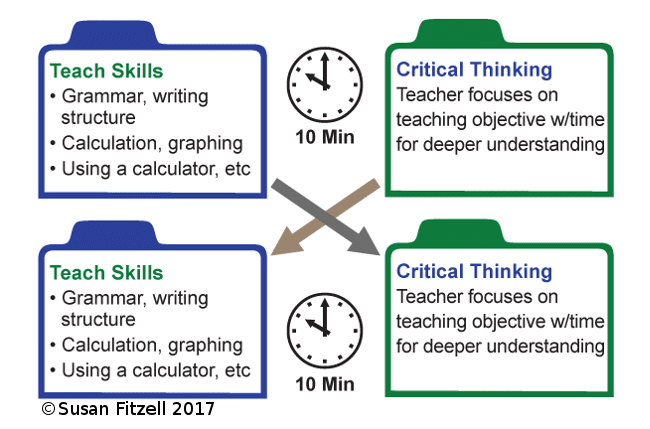Dear Susan: My co-teacher and I often find that we don’t have enough time for each of us to teach a specific skill or concept to our students before class time runs out. We both feel we could give the students more tools to work with, but aren’t sure how to fit it all in with the time we’re given. Also, how do we make sure both of us are using our skills when implementing the co-teaching models? Do you have any suggestions?
Answer: Implementing co-teaching models is easier when chunking your class time and focusing on your teaching strengths.
My favorite co-teaching model implementation is “teach half, then switch.” I wouldn’t do it all the time, because then you’re never teaching together. But as far as doing a 10-minute chunk and then another 10 minute chunk, I love this method of implementing the co-teaching models.
When you teach half, then switch, both teachers can focus on their skill set and talents. For instance, maybe you’ve got a math teacher working with a co-teacher or specialist who’s not as knowledgeable about math. Maybe the specialist is a speech pathologist who’s really familiar with language, or a reading specialist who knows how to teach strategies of reading.
For 10 minutes, the content area co-teacher (math teacher in this scenario) can teach the core math content to half the class. During this time, the other half of the class could be working with the other co-teacher or specialist on reading and dissecting word problems. At the end of the 10 minutes, switch, so that the content area teacher is teaching core content to the other half of the class while the specialist teaches how to read and dissect word problems to the first group.

In this scenario, both co-teachers are able to apply their skill set to teaching that content and giving students valuable tools to work with.
Another way to “teach half, then switch” is to teach two different content pieces at the same time. One of you could be working with half the class on a specific skill set—maybe grammar, or test-taking skills, or even graphing skills if the core content calls for it. The other half of the class could be working on core standard for science, or math—two areas where those graphing skills will be very useful.

In both scenarios, you’re using the time to maximize the skill sets of both adults in the room, and you’re setting up the students for success because you’re giving them two good, solid 10-minute chunks on a skill set.
When you’re teaching from the front of the room, it can be difficult to find the time to focus on a skill set. Chunking the class and using the “teach half, then switch” method can make time management so much easier!

Bring Susan to your campus!
Featured seminar – Co-teaching and Collaboration

